 Petzlover
Petzlover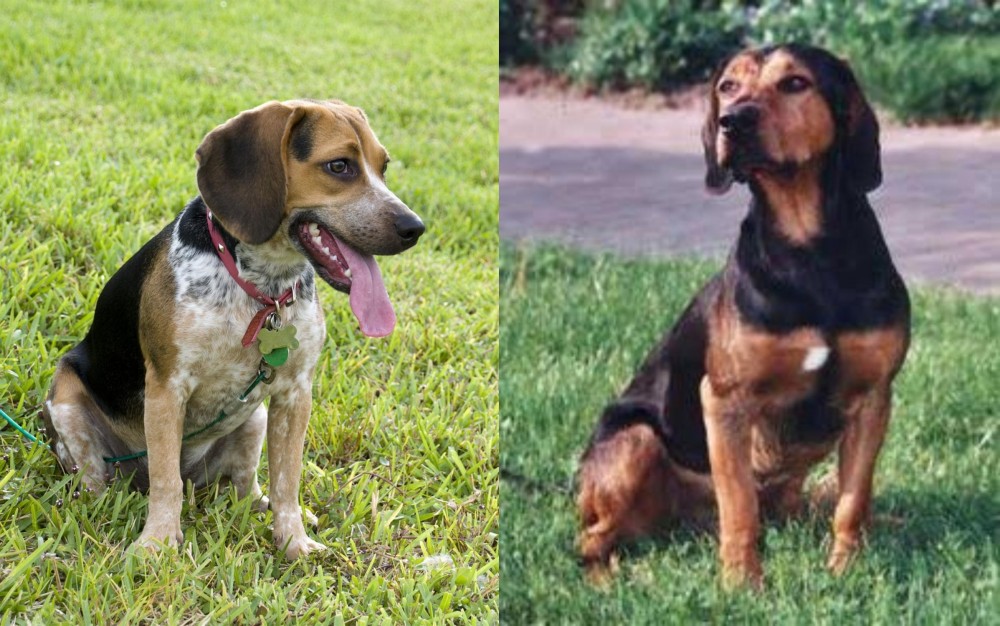 Bluetick Beagle is originated from United Kingdom but Tyrolean Hound is originated from Austria. Bluetick Beagle may grow 9 cm / 3 inches shorter than Tyrolean Hound. Bluetick Beagle may weigh 15 kg / 33 pounds lesser than Tyrolean Hound. Both Bluetick Beagle and Tyrolean Hound has almost same life span. Both Bluetick Beagle and Tyrolean Hound has almost same litter size. Both Bluetick Beagle and Tyrolean Hound requires Low Maintenance.
Bluetick Beagle is originated from United Kingdom but Tyrolean Hound is originated from Austria. Bluetick Beagle may grow 9 cm / 3 inches shorter than Tyrolean Hound. Bluetick Beagle may weigh 15 kg / 33 pounds lesser than Tyrolean Hound. Both Bluetick Beagle and Tyrolean Hound has almost same life span. Both Bluetick Beagle and Tyrolean Hound has almost same litter size. Both Bluetick Beagle and Tyrolean Hound requires Low Maintenance.
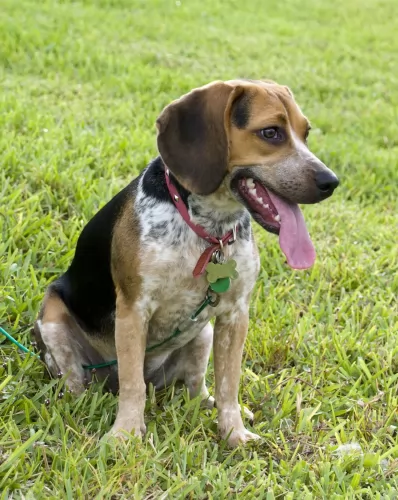 Among the hound group of dogs, there are some ancient breeds. The history of the Beagle and the Bluetick Beagle more specifically is fairly uncertain as breeds as we know them today didn't really develop until the 19th century. It was in the mid-1800s the Reverend Phillip Honeywood established Beagles in Essex, England and American breeders started importing Beagles from England to improve the looks of their own dogs. The breed was developed from a number of breeds and possibly the Bluetick Coonhound had some input into the markings of the Bluetick Beagle.
Among the hound group of dogs, there are some ancient breeds. The history of the Beagle and the Bluetick Beagle more specifically is fairly uncertain as breeds as we know them today didn't really develop until the 19th century. It was in the mid-1800s the Reverend Phillip Honeywood established Beagles in Essex, England and American breeders started importing Beagles from England to improve the looks of their own dogs. The breed was developed from a number of breeds and possibly the Bluetick Coonhound had some input into the markings of the Bluetick Beagle.
Today the American Kennel Club recognizes many colors and color combinations in Beagles. with white, tan and black being the more common color. Beagles can also sport ‘markings’ such as blue and red freckles or ticks. If there are black ticks, it can be referred to as blue-ticked.
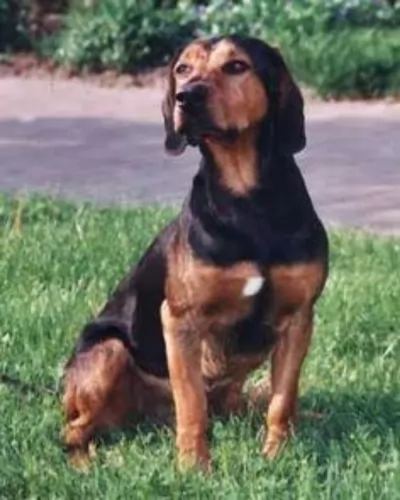 The Tyrolean Hound, also known as Tyroker Bracke or Tiroler Bracke originates from Tyrol, Austria. It seems the dog was developed in the late 1800s for hunting.
The Tyrolean Hound, also known as Tyroker Bracke or Tiroler Bracke originates from Tyrol, Austria. It seems the dog was developed in the late 1800s for hunting.
This is a scenthound that is thought to have descended from Celtic Hounds, Foxhounds and Bloodhounds in the late 1800s.
The dog is a member of the FCI’s scent hound group. The dog was recognized as its own breed in 1908, and in 2006 it was recognized by the United Kennel Club.
 The Bluetick Beagle is a small sized hunting dog. As part of the Hound group of dogs, he has an excellent sense of smell. He has always been used as a hunting dog, and it is why this particular dog is a popular choice for law enforcement agencies – it’s that keen sense of smell.
The Bluetick Beagle is a small sized hunting dog. As part of the Hound group of dogs, he has an excellent sense of smell. He has always been used as a hunting dog, and it is why this particular dog is a popular choice for law enforcement agencies – it’s that keen sense of smell.
He is lean and compact with muscular legs, a broad head, fairly long floppy ears and a broad chest. His coat is short-haired and smooth and its the short blue coloration in his coat sets the Bluetick Beagle apart from the regular Beagle.
The Blue Tick Beagle can have a bit of a stubborn streak, but be that as it may, he still responds well to training and socialization. Alert, he has an amicable nature, and this is what makes this breed such a great family pet He’ll get on well with children in the house as well as with other pets.
The Blue Tick Beagle isn’t an aggressive dog breed. He is lively and playful and full of energy and will require you taking him on walks, runs in the park and lots of games at home.
He loves the companionship of his human family and can’t just be left in the back yard on his own for long periods of time. He can suffer with separation anxiety and also become bored and then he starts with long, mournful howls.
 The Tyrolean Hound is a medium-sized to large dog. He stands at roughly between 43 to 50cm in height and can weigh between 20 and 27kg.
The Tyrolean Hound is a medium-sized to large dog. He stands at roughly between 43 to 50cm in height and can weigh between 20 and 27kg.
He is muscular, lean and compact. The double coat is short and smooth and can be red, tan, black or tri-colored. The ears are high set, are broad, floppy and long. The tail is long and is carried high.
Independent and intelligent the Tyrolean Hound is a hardworking dog, loving to be active. He has all the characteristics of a great pet and companion – loving, lively, intelligent, independent, easily trained and protective.
He’s the kind of dog that would suit a home with a large garden as opposed to living in the city. He is wary of strangers and has a loud bark to warn you of intruders. He has a friendly nature with his human family and makes a good playmate for children.
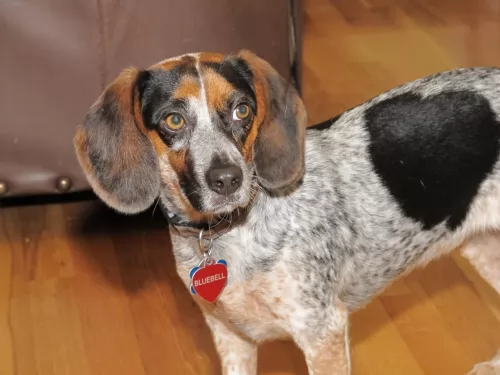 Your Blue Tick beagle is an active, cheerful dog and he makes a good companion for adult or child. He is fairly adaptable and can happily fit into a home in the city- or country. A Blue Tick Beagle doesn’t want to be left alone day after day, so think about your work commitments before you buy buy your Blue Tick and leave him alone.
Your Blue Tick beagle is an active, cheerful dog and he makes a good companion for adult or child. He is fairly adaptable and can happily fit into a home in the city- or country. A Blue Tick Beagle doesn’t want to be left alone day after day, so think about your work commitments before you buy buy your Blue Tick and leave him alone.
Being a hound, although he is gentle and amicable, he can also be stubborn which means he will require some patient training. Because he is a scenthound, he is inclined to catch an aroma and want to go after it, so you’ll need a well fenced garden to keep him in.
Other than that when he is with you, he makes a dedicated and loving companion.
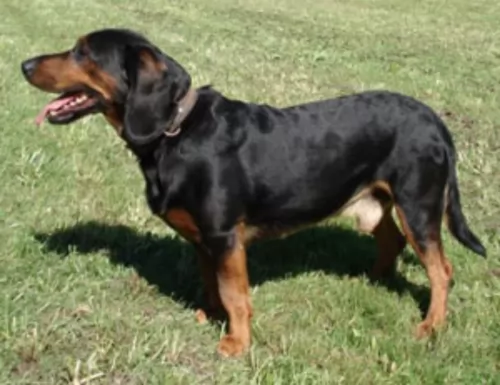 The Tyrolean Hound is a keen hunting dog loving to be outdoors and active, requiring large grounds to be happy.
The Tyrolean Hound is a keen hunting dog loving to be outdoors and active, requiring large grounds to be happy.
Once he comes indoors he is able to settle down with his human family and have some quiet time with them.
He is loyal and loving, but you are going to have to be prepared for an active lifestyle with this skilled hunting dog of yours.
 Beagles are healthy dog breeds, and with good care, can enjoy an average lifespan of between 12-15 years. Like many other dogs, the Blue Tick beagle is more prone to a number of medical conditions, and more so as it ages. It is essentially a hardy breed that won’t require any particular special care, but common dog problems such as hip dysplasia and skin allergies will need to be watched.
Beagles are healthy dog breeds, and with good care, can enjoy an average lifespan of between 12-15 years. Like many other dogs, the Blue Tick beagle is more prone to a number of medical conditions, and more so as it ages. It is essentially a hardy breed that won’t require any particular special care, but common dog problems such as hip dysplasia and skin allergies will need to be watched.
There are always some health concerns with every dog breed that every dog owner needs to be aware of. Dog with floppy ears such as what the Blue Tick Beagle has will always be prone to ear infections. The ears will need to be kept clean but you can’t just go prodding around in a dog’s ear as you could damage the ears. A visit to the veterinarian will clear up any ear problems.
This particular condition - prolapse of the gland of the nictitating membrane – is important to clear up quickly as it could lead to more serious problems. The longer the third eyelid gland is problematic, the more irritated and inflamed it becomes.
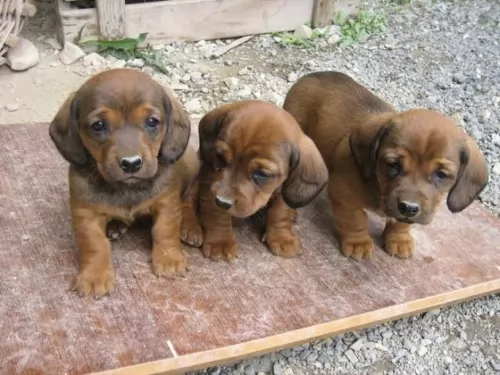 Because these dogs put everything into their hunting, injuries related to hunting can sometimes plague this energetic dog.
Because these dogs put everything into their hunting, injuries related to hunting can sometimes plague this energetic dog.
Apart from that, he is robust and can live to be 12 – 14 years of age. There are one or two common dog illnesses to look out for with this dog such as hip dysplasia or ear infections.
The large, floppy ears of the Tyrolean Hound are prone to ear infections. Unlike with dogs that have erect ears, these dogs don’t have their inner ears aired and the dampness, wax and dirt cause bacteria to build up which ultimately leads to an ear infection.
The hip joint forms abnormally, leading to chronic wear and tear together with inflammation. Sometimes the dog will squeal when he gets touched around his hips. The condition can worsen and sometimes the dog even becomes lame. He will need to get to the vet for something to control pain.
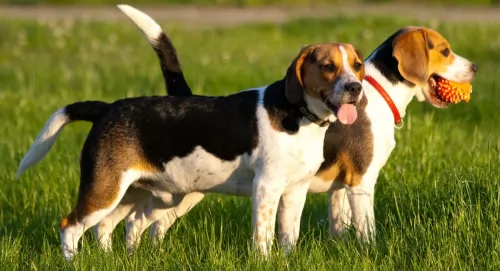 A good, nutritious diet will help your Blue Tick Beagle steer clear of ill health. He is an energetic breed so will require either home prepared food or commercially manufactured dog food with the right mix of vitamins and minerals to keep his energy levels up.
A good, nutritious diet will help your Blue Tick Beagle steer clear of ill health. He is an energetic breed so will require either home prepared food or commercially manufactured dog food with the right mix of vitamins and minerals to keep his energy levels up.
As mentioned, your BlueTick can be prone to hip dysplasia and skin allergies so a supplement which includes omega 3 is an excellent choice for your dog’s overall health. Make sure to include some raw meat into your dog’s diet and always ensure a constant supply of fresh water.
Your Bluetick Beagle isn’t a huge shedder with his short-haired coat, but he will need to be brushed at least twice a week to keep his coat in tip-top condition and to remove all those loose hairs. Bathing a dog is never encouraged as it removes the dogs natural oils, but of course there are always exceptions when a dog will require a bath.
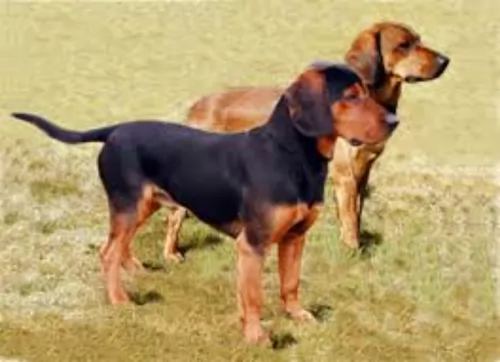 He has a short coat and will simply require a brush twice a week. Because of the fairly large, floppy ears, he will need to have the inside of his ears checked for redness and the possibility of an ear infection.
He has a short coat and will simply require a brush twice a week. Because of the fairly large, floppy ears, he will need to have the inside of his ears checked for redness and the possibility of an ear infection.
This dog has always been used to plenty of exercise. He won’t adapt to life in the city on a tiny property. The ideal place for this dog is on a large property, preferably a farm.
Walks, hikes, swimming, ball games, hide and seek – he is a dog that can’t seem to get enough action – he wants to be in on all the action. He is intelligent and will also need mental stimulation.
If you were to buy your lean Tyrolean Hound some commercially manufactured food, you’d buy him food that was made for high energy dogs. You’d certainly want to make sure the food is of a high quality, packed with vitamins and minerals and natural ingredients.
He would also love some home-made food too. Raw meat occasionally would do him the world of good. This sort of food needs to be plain and simple such as boiled chicken, brown rice and vegetables.